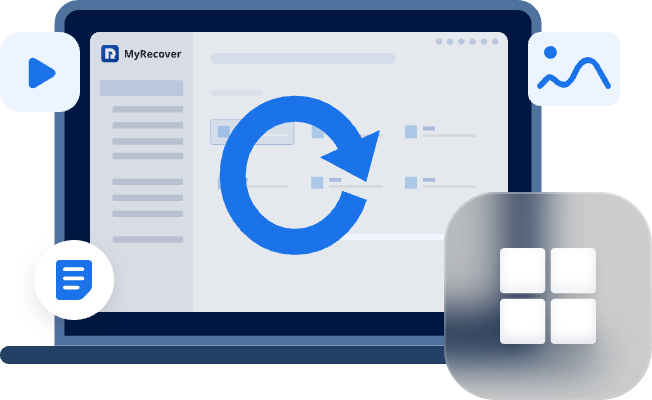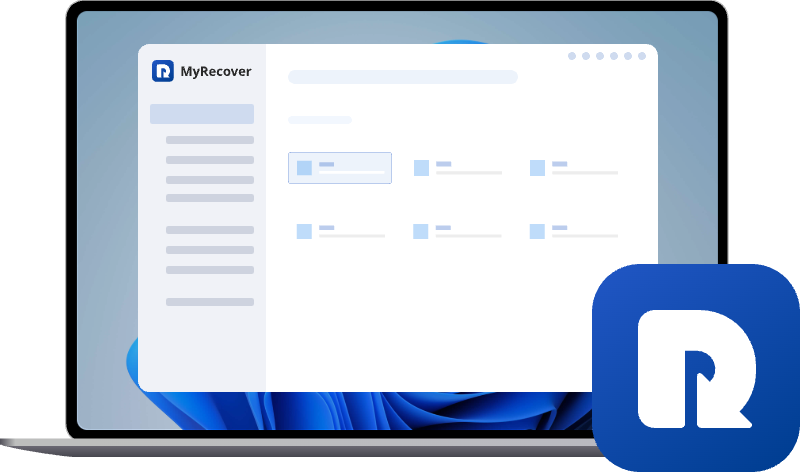Why Doesn't Recycle Bin Appear in File Explorer? Reveal the Truth
The Recycle Bin is a crucial part of managing deleted files, but you may have noticed that it doesn’t appear in File Explorer. We’ll walk you through the steps to restore the icon, enabling you can access and use the Recycle Bin effectively, provide alternative ways to retrieve the deleted files.
Preface
I deleted some unnecessary files yesterday, but I regretted it afterward. When I opened File Explorer and tried to restore them from the Recycle Bin, the Recycle Bin doesn't appear in Windows Explorer. Is there a way to bring it up?
- Question from concoran
As an essential element of file management in the Windows OS, the Recycle Bin plays an indispensable role by providing a safety net for deleted files before they are permanently erased from your system. However, sometimes users face an issue where the Recycle Bin doesn’t appear in File Explorer. This problem can be both frustrating and concerning, especially when you want to retrieve deleted files that you thought were safely stored.
Why Doesn't the Recycle Bin Appear in File Explorer?
This situation can happen for a variety of reasons, ranging from simple settings changes to deeper issues with the operating system. While it's easy to overlook, losing access to the Recycle Bin can mean a lot of unnecessary stress if you need to recover recently deleted files. There are a few common reasons why the Recycle Bin might disappear from File Explorer:
💾Changes in Windows 10/11 UI Design
Windows 10 and Windows 11 have optimized the interface of File Explorer, and icons for the Recycle Bin and Control Panel are no longer displayed in the sidebar by default. This does not affect the functionality of the Recycle Bin.
📂Hidden System Icons
In some cases, the Recycle Bin might have been set to "hidden" as part of Windows system icon settings.
📌Malfunctioning Updates or System Changes
After a system update or a major software installation, certain Windows settings or components may be disrupted, causing the Recycle Bin to disappear.
🛠️Corrupted System Files
A corrupted Windows configuration or system file can also prevent the Recycle Bin from appearing in the File Explorer.
How to Restore the Recycle Bin to the File Explorer
If your Recycle Bin has only disappeared from the sidebar of File Explorer, but the Recycle Bin icon on your desktop or the Recycle Bin folder in your drives is still there, you don’t need to worry. This means the Recycle Bin is still fully functional, and no data has been lost. You can restore the Recycle Bin icon to File Explorer sidebar using the following ways.
Pin Recycle Bin to File Explorer Sidebar
This way can help you pin the Recycle Bin to File Explorer sidebar again for quick and easy access anytime. Select the Recycle Bin icon on your desktop and drag it to the Quick access in File Explorer. Once you see "Pin to Quick Access", you can release your mouse. Then you can access Recycle Bin in File Explorer.
Show All Folders in Navigation Pane
This method will force the display of the entire classic folder tree rooted in the Desktop, including the Control Panel and the Recycle Bin. If you want the Recycle Bin to open directly in File Explorer, try this method:
Step 1. Press "Win" + "E" to open File Explorer.
Step 2. Click "View" tab, expand "Navigation pane" and check the "Show all folders" option. Then the Recycle Bin will immediately show in the left panel.
Change Registry Editor
Additionally, you can also add the Recycle Bin to the This PC section by modifying the Registry Editor, which will allow you to access the Recycle Bin in File Explorer more easily.
Step 1. Press "Win" + "R" and type "regedit" in the run dialog, then click "OK" to open Registry Editor.
Step 2. Navigate to the following path:
HKEY_LOCAL_MACHINE\SOFTWARE\Microsoft\Windows\CurrentVersion\Explorer\MyComputer\NameSpace
Step 3. Right click on the "NameSpace" and choose "New" > "Key". Name it as {645FF040-5081-101B-9F08-00AA002F954E}.
Step 4. Close Registry Editor and restart your computer to check if Recycle Bin shows in File Explorer.
Other Ways to Access the Recycle Bin
If the Recycle Bin still doesn’t show up in File Explorer, or if you don’t want to go to the trouble of adding it to File Explorer again, Windows also provides many ways to access the Recycle Bin.
Accessing Through Desktop
The most straightforward way to access the Recycle Bin is by navigating to your desktop. If the Recycle Bin icon is missing on Windows, go to the "Settings" > "Personalize" > "Themes" > "Desktop icon settings", check the Recycle Bin icon, then click "Apply" to show it on the desktop.
Accessing Through Windows Search
Just like any other programs installed on your computer, you can also search for the Recycle Bin via the Windows search bar. You only need to type "Recycle Bin" in the Start menu, then you can locate it.
- Notes:✎...
- In the event that the Recycle Bin fails to be located through Search, this could be attributed to the fact that it has not been pinned to the Start menu. Right click the "Recycle Bin" icon on your desktop, and choose "Pin to Start".
Accessing Through Drives
Even if the Recycle Bin is deleted, you don’t need to worry. When you delete files from the internal hard drive again, Windows will automatically create a $Recycle.bin folder on that drive which stores all the deleted files. You can follow these steps to view it:
Step 1. Open File Explorer and click "View" tab, and check the "Hidden items", then click "Options".
Step 2. Under the "View" tab, untick the "Hide protected operating system files (Recommended)" and click "Yes" to confirm.
step 3. Go to the drive where the deleted files were deleted, and open the $Recycle.bin folder. Then you can access the Recycle Bin to restore your files.
Using MyRecover as an Alternative to Recycle Bin
Although the Recycle Bin can help you manage deleted files well, an accidental incorrect operation like emptying the Recycle Bin may cause all files to disappear instantly. If you've already emptied the it or Recycle Bin is corrupted, you can rely on data recovery software like MyRecover as an alternative. This tool can scan your hard drive for deleted files, even those that were permanently removed from the Recycle Bin.

- Faster scanning compared to command-line tools.
- Higher success rate for permanently deleted files.
- Compatible with all Windows operating systems.
- Work on HDD, SSD, USB flash drive, memory card, etc.
- Allow extracting files from the hard drive.
Step 1. Download and install MyRecover on your computer from Microsoft Store, avoid installing it on the drive with lost files.
Step 2. Launch the program and select a drive including the deleted files to scan, then click "Scan".
Step 3. Choose files you attempt to recover from the recoverable lists and click "Recover".
Step 4. Select a safe location (not the original one) to save the recovered files.
When the process is done, the message "Files have been recovered successfully" will pop up. Then you can view the recovered files by clicking on the "Browse" button.
Conclusion
The Recycle Bin is a vital tool for recovering deleted files, but it’s not always guaranteed to be visible in File Explorer. Fortunately, by adjusting your system settings, using Registry Editor, or accessing it through other methods, you can regain access to this essential tool. And in case the Recycle Bin is not an option or your files are permanently deleted, recovery tools like MyRecover provide a robust solution to retrieve lost data.
In addition, MyRecover’s Professional Version offers enhanced data recovery capabilities, allowing for unlimited recovery across multiple devices and file previewing. This tool is an excellent choice for professionals who need to recover data efficiently and effectively.


